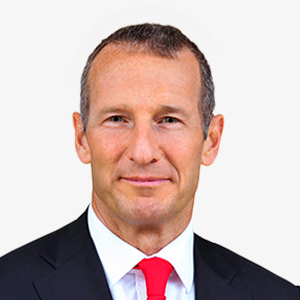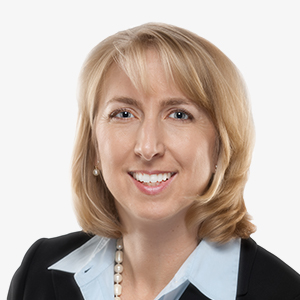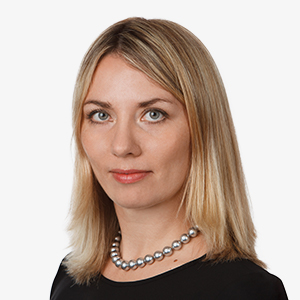Emerging Markets Debt Fund
Mutual Funds | Fixed Income
Emerging Markets Debt Fund
YTD RETURN
0.00%
NOTICE: As previously disclosed in a supplement dated March 31, 2025 to the Fund’s Summary Prospectuses, Prospectuses and Statement of Additional Information, the Board of Trustees of the Fund approved the conversion of the Fund into a newly organized series (“ETF”) of Neuberger Berman ETF Trust (the “Conversion”). The Conversion will be effected through the reorganization of the Fund into the ETF. After the Conversion, it is anticipated that the ETF will primarily invest in hard currency emerging markets debt securities, and will continue to be managed by the same key members of the portfolio management team. The ETF will not commence investment operations prior to its Conversion and the ETF’s shares are not currently being offered to the public, nor have they been approved for listing on any exchange. It is anticipated that the Conversion will occur during the third quarter of 2025. Prior to the Conversion, shareholders of the Fund will receive a combined information statement/prospectus describing in detail both the Conversion and the ETF involved in the Conversion.
Why Invest
Broad Emerging Market Debt (EMD) Coverage
Integrated portfolio that provides the opportunity to invest in dozens of countries, currencies, yield curves, industry sectors, and issuers across credit rating buckets
A Robust Research Process
Combines bottom-up analysis with proprietary coverage of 90+ Emerging Market (EM) countries and integration of ESG factors into the Fund’s fundamental investment analysis with a top-down asset allocation framework
Experienced, Stable and Well-Resourced Investment Team
A well-established investment team with a long-term track record in managing EMD strategies and a multi-site set-up to ensure local perspective is incorporated
Morningstar Rating
For each retail mutual fund with at least a three-year history, Morningstar calculates a Morningstar Rating based on a Morningstar Risk-Adjusted Return measure that accounts for variation in a fund’s monthly performance (including the effects of sales charges, loads, and redemption fees), placing more emphasis on downward variations and rewarding consistent performance. The top 10% of funds in each category receive five stars, the next 22.5% receive four stars, the next 35% receive three stars, the next 22.5% receive two stars and the bottom 10% receive one star. (Each share class is counted as a fraction of one fund within this scale and rated separately, which may cause slight variations in the distribution percentages.) The Overall Morningstar Rating for a retail mutual fund is derived from a weighted average of the performance figures associated with its three-, five- and ten-year (if applicable) Morningstar Rating metrics. Ratings are ©2024 Morningstar, Inc. All Rights Reserved. The information contained herein: (1) is proprietary to Morningstar and/or its content providers; (2) may not be copied or distributed; and (3) is not warranted to be accurate, complete or timely. Neither Morningstar nor its content providers are responsible for any damages or losses arising from any use of this information.
Total (net) expense represents the total annual operating expenses that shareholders pay (after the effect of fee waivers and/or expense reimbursement). The Manager has contractually undertaken to waive and/or reimburse certain fees and expenses of Class A, Class C and Institutional Class so that the total annual operating expenses are capped (excluding interest, brokerage commissions, acquired fund fees and expenses, taxes including any expenses relating to tax reclaims, dividend and interest expenses relating to short sales, and extraordinary expenses, if any; consequently, total (net) expenses may exceed the contractual cap) through 10/31/2027 for Institutional Class at 0.78%, Class A at 1.15% and Class C at 1.90% (each of average net assets). Absent such arrangements, which cannot be changed without Board approval, the returns may have been lower. Information as of the most recent prospectus dated February 28, 2024, as amended and supplemented.
Weighted Average Maturity is expected average life to worst or in other words the par-weighted average time (in years) to principal repayment for securitized assets or the time (in years) to probable call/put for non-securitized assets.
Weighted Average Duration is expressed as a number of years from its purchase date. It is a measurement of how long, in years, it takes for the price of a bond to be repaid by its internal cash flows. As bonds with higher durations carry more risk and have higher price volatility than bonds with lower durations.
Tracking Error (average 3-year shown) is the standard deviation of a portfolio’s relative returns (vs. a benchmark) and measures the volatility of the return differences between the portfolio and benchmark over time. A higher tracking error implies that a portfolio is actively managed vs. its benchmark. A portfolio that mirrors its benchmark would have a very low tracking error.
Information Ratio (average 3-year shown) is a measure of risk-adjusted returns. The average excess return (over an appropriate benchmark or risk free rate) is divided by the standard deviation of these excess returns. The higher the measure, the higher the risk adjusted return. The Information Ratio of the benchmark will equal zero.
30-day SEC yield is similar to a yield to maturity for the entire portfolio. The formula is designated by the Securities and Exchange Commission (SEC). Past performance is no guarantee of future results. Absent any expense cap arrangement noted above, the SEC yields may have been lower. A negative 30-Day SEC yield results when a Fund’s accrued expenses exceed its income for the relevant period. Please note, in such instances the 30-day SEC yield may not equal the Fund’s actual rate of income earned and distributed by the fund and therefore, a per-share distribution may still be paid to shareholders. The unsubsidized 30-day SEC yields for Class A, Class C and Institutional Class are 5.70%, 5.78% and 5.97% respectively.
Rob Drijkoningen
Vera Kartseva, CFA, Vice President, joined the firm in 2013. Vera is a Strategist on the Emerging Markets Debt team. In this role, Vera focuses on tactical asset allocation within EMD. Vera joined the firm from ING Investment Management where she held a similar role, and was also managing an EMD Opportunities fund, a blended strategy of hard and local currency debt. Prior to that, Vera was a quantitative analyst on the Multi-Asset Group of ING Investment Management, where she focused on Global Tactical Asset Allocation. Prior to working at ING Management, Vera worked for Saen Options, Amsterdam, as a junior quantitative researcher. Vera received a Bachelor’s degree in Applied Mathematics (cum laude) from the Kharkov National University of Radio Electronics, a Master’s degree in Information Management and a PhD in Economics and Business Administration from the Vrije Universiteit of Amsterdam. Vera has been awarded the Chartered Financial Analyst designation.







